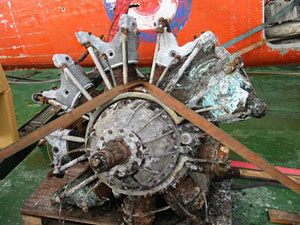
|
NEWSLETTER #63 - JUNE 2008 WORTH A SECOND GLANCE - EXTRA
A number of cards worthy of this title have been accumulating so rather than hold several back for future editions they all presented in an extended feature, starting with………
WHAT COULD BE RARER THAN A CHINESE HELIPORT…..
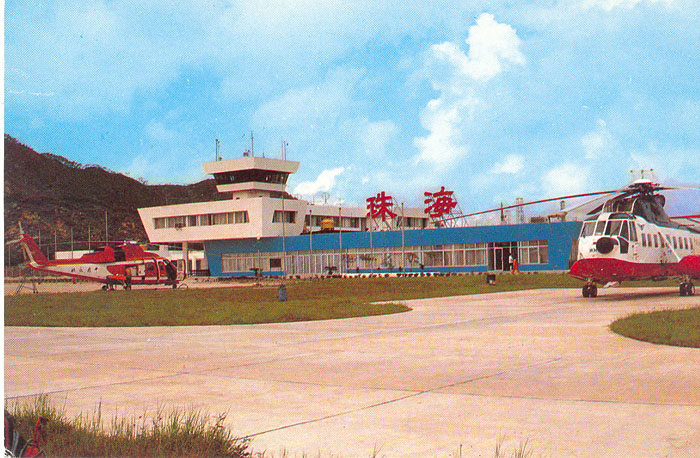
.... a Chinese heliport with a British Airways Sikorsky S.61. This Chinese card is titled Heliport Zhuhai and features a Sikorsky S.76 and S.61. But the S.61 has nose codes WM and the white and red colour scheme seems to be derived from that of BA Helicopters. It was quite easy to establish that Zhuhai in South China was a centre for oil exploration and that various oil companies have regional offices there, including BP. But, for once Internet sources had nothing about BA helicopter operations or sales of BA S61’s to China. This info was found in an Air Britain History of BA Helicopters by P Lo Bao 1985 and goes as follows. “In 1983 BP were appointed by the Chinese Government to search for oil in the China Sea. The Chinese National Airline CAAC was to service the rigs but lacked suitable helicopters. BAH won the contract to lease CAAC two S.61’s and to train Chinese pilots and engineers. In August 1983 4 pilots attended the BAH training school at Aberdeen while 6 engineers received instruction at Gatwick and Aberdeen. In October , two S.61’s G-BEOO and G-BEWM were shipped to China. Flying began in November 1983 from a base at Zhuhai. 3 BAH engineers and a pilot are based at Zhuhai”. Elsewhere these 2 S.61s are listed as still being on this contract in Sept 1985. The S61 is in basically the helicopter version of the first BA colour scheme but will all titles removed. A winged logo by the crew window is presumably that of CAAC. ANGLO-JAPANESE AMPHIBIANS Staying in the Asia/Pacific regions, two Navy Flying Boat cards from Japan.
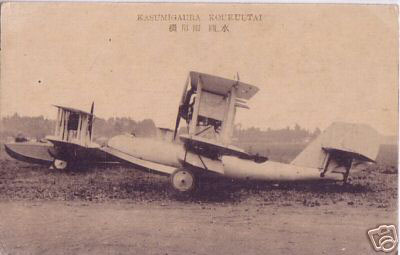
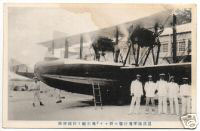
Both have their main text in Japanese but the lower one also has Kasumigaura Kokkuutai in western characters. There is a sort of Supermarine look to both foreground boats and the distant one looks English rather than Curtiss derived. Following up these clues from various on-line and paper sources come up with the following. First Kasimagaura ..... Kasumigaura was, and still is, a Japanese Naval Air base, 50 miles north of Tokyo. The seaplane section operated on the nearby Lake of the same name. From 1924 it housed the main Navy Air Training School with equivalent status to RAF Cranwell. In 1920/21 a British military mission of about 30 RAF personnel was in Japan assisting with the establishment of a naval air force, including the creation of the Kasumigaura school. As a result, Vickers and Supermarine supplied flying boats to the Japanese navy in the 1920s. The front boat on the top card is a Supermarine Seagull III amphibian. This was powered by a single Napier Lion. This type was also supplied to the Royal and Australian Navies and was a fore-runner of the Walrus & Sea Otter. The other amphibian in the background is a Vickers Viking. This was a 4 seat cabin design also with a Napier Lion Two Viking Mk IV designated Type 58 were supplied to the Imperial Japanese Navy – other military customers included the US Navy (1) Dutch east Indies Air Force (2) Argentine navy (4) Canadian A.F (2).. Two derivative 3 seat Vultures were built specially for a round-the-world flight attempt by S/L Maclaren in 1924 and the first G-EBGO was shipped to Japan as a back-up aircraft and this was also assembled at Kasumigaura. It was needed and was shipped to Burma to replace the crashed G-EBHO but itself forced landed off the Aleutians. The lower view appears to be the sole Supermarine Southampton supplied to Japan in 1928, initially for the Navy but later converted locally into a 16 passenger civil airliner J-BAID for Osaka based NKYK. Having featured cards from halfway round the world by longitude, here is another as far by latitude. This unusually features an out of service wreck as its main feature. ANTARCTIC OTTER The back of this next card is printed in English but gives a German E-Mail address with a code RK14 and “Limited Edition 250 cards”. The title is Antarctica South Shetlands , Deception island. But instead of the more likely landscape or wildlife views that possibly constituted the rest of the series, this one has the remains of a deHavilland Canada Otter with other debris and a rusting corrugated iron building.
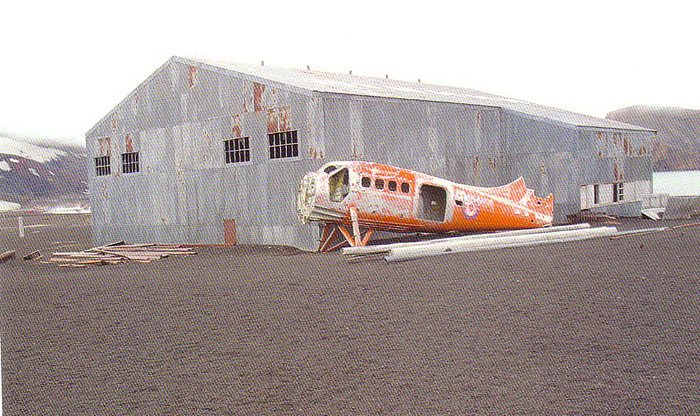
Deception Island (62°57'S, 60°38'W) is an active volcano in the South Shetland Islands, off the Antarctic Peninsula. Its unique landscape comprises barren volcanic slopes, steaming beaches and ash-layered glaciers. It has a distinctive horse-shoe shape being essentially a large flooded crater. The Otter is relatively easy to trace., Construction No. 294 was purchased in 1959 and registered as VP-FAI but painted and flown as VP-FAK. It arrived at Deception Island in pieces by sea on 26 January 1960, and was assembled on site. Although it was serviced and spent its winters at Deception, during the summer seasons it operated out of Adelaide Island. In October 1961 the plane was damaged in a gale at Deception, and it was again damaged in a crevasse accident at Adelaide in December 1964. During the 1966/67 season, this aircraft was used for the first airborne radio echo sounding carried out in the Antarctic. The Otter was grounded due to extensive metal fatigue in its fuselage on 26 March 1967, and written off at the end of the season. At some time an illegal attempt was made by a private individual to remove the wreck and consequently in April 2004, a team from the British Antactic Survey was sent to remove it as part of a general clean-up of derelict buildings and debris from the island. Some of these dated from early c.20 whaling , the rest from military or Antarctic survey activity. In clearing out the building shown, the wings , tail unit and part of the ski undercarriage were found. Later when excavating a rubbish tip , the engine and another ski were retrieved. There is a lot more including photos of the recovery operation at http://www.antarctica.ac.uk/living_and_working/ diaries/rrs_ernest_shackleton/antarctic2003_2004/27/index.php but two are reproduced below.
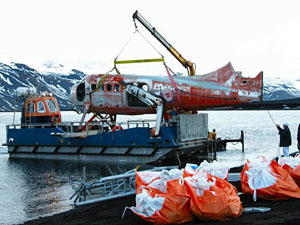
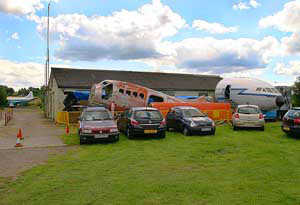
|
